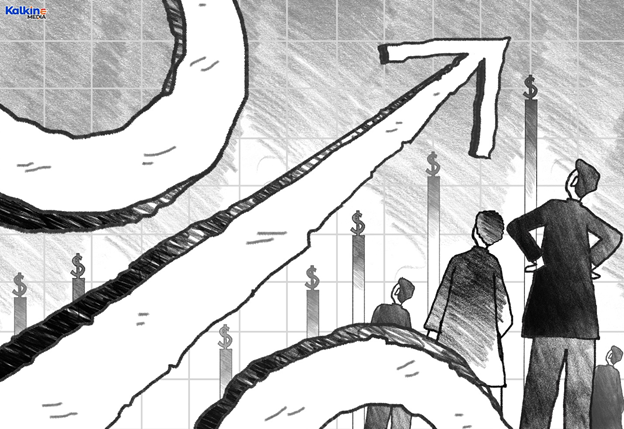Highlights
- The UK inflation has hit a fresh 30-year high of 5.5% in January 2022.
- The Bank of England has doubled the interest rates from 0.25% to 0.5% after the inflation in UK surged to 5.4% in December 2021.
- Interest rate is used to control inflation and in theory, interest rates and inflation are inversely related.
The UK inflation has hit a fresh 30-year high of 5.5% in January 2022, which is way above the Bank of England’s (BoE) 2% target. In March 1992, inflation stood at 7.1%. This is in addition to the average basic pay rose by just 3.7% per year in the quarter to December. On Tuesday, the salaries saw their biggest dip since 2014 in the last quarter of 2021 (three months to December) as wage growth slowed down.
The rising inflation is going to stay for a while in the UK. It is not just for the advanced economies, all major emerging economies and developing countries are reeling under this pressure. Inflation has an impact on everything from food prices to fuel prices as well as mortgages.
On 3 February, the Bank of England doubled the interest rates from 0.25% to 0.5% after the inflation in the UK surged to 5.4% in December 2021. The central bank predicted that inflation could hit 7.25% in April, higher than 6%, which was projected before. It also downgraded its growth prediction to 3.75% from 5% this year, and to 1.25% from 1.5% in 2023.
What is inflation?
Inflation refers to the rate of increase in prices of goods and services or increase in the cost of living in an economy over a certain period of time. It indicates a decline in the purchasing power of a customer and the most used inflation indices are the Consumer Price Index (CPI) and the Wholesale Price Index (WPI).

© 2022 Kalkine Media®
Inflation is the key indicator of the health of an economy. In the UK, the Office of National Statistics (ONS) is responsible for measuring inflation, which produces three main estimates of inflation that are the Consumer Price Index (CPI), the Consumer Price Index including housing costs (CPIH), and the Retail Price Index (RPI).
For computing CPI, the ONS looks at the prices of all goods and services and compares them year-on-year. CPI is the most widely used measure of inflation and the items used in the basket to measure CPI are reviewed every year as customers’ tastes and spending habits change over time.
The RPI is another inflation measure used by ONS, same as CPI it draws on a basket of goods and services and adds mortgages interest payments.
Also Read: How hike in interest rates will hit Britons
What is the Interest rate?
For borrowers, interest rate is an amount charged on mortgages, shown as a percentage of the total amount of the loan. Higher the interest rates more borrowers have to pay back for a mortgage or a loan. However, for savers, interest rate is the amount savers receive as interest on their saving account. Higher the interest rate, higher the amount they will receive on their deposits.
Inflation and interest rates
Interest rate is used to control inflation by the central banks and in theory interest rates and inflation are in an inverse relationship. This means when interest rates are high, inflation tends to fall and when rates are low, inflation tends to rise.
The interest rates in the UK have been at a record low since the beginning of the pandemic, this caused inflation to rise to the current level. As inflation is rising unexpectedly, the Bank of England decided to slow it down by raising interest rates, which made borrowing expensive.
Also Read: Economies with record-breaking inflation
When the interest rates are increased by the central banks, the cost of borrowing increases, which makes borrowing unaffordable. Therefore, it reduces the money supply in the economy. The fall in money supply leaves customers with less disposable income, which ultimately reduces the demand of goods and services. So, with the declining demand and constant supply, the prices of the goods and services fall.
However, in the situation of deflation, the interest rates are reduced by the central banks, which makes borrowing cheaper and hence increases money supply in the economy. The increase in money supply leaves customers with high disposable income, which ultimately increases the demand for goods and services. So, with the rising demand and constant supply, the prices of goods and services increases, which lead to a rise in inflation.



